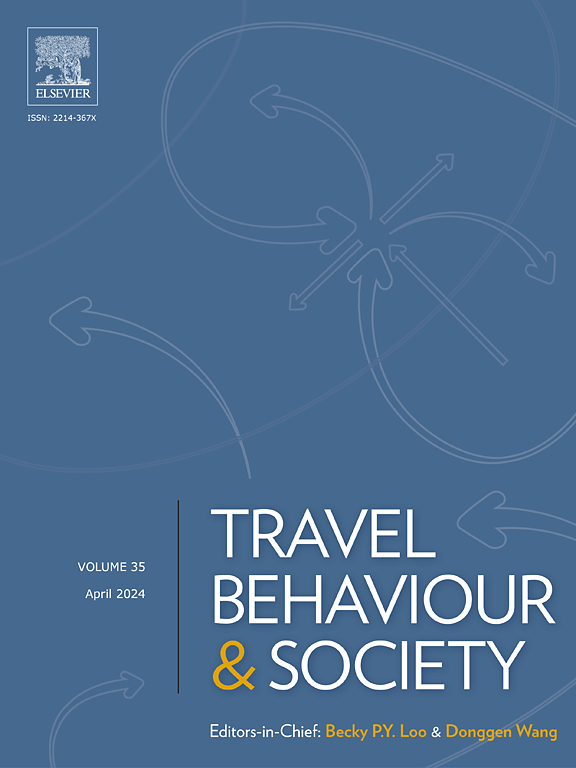A novel method to identify high emission state of CO2 and NOX based on PEMS data of gasoline passenger cars: Insight from driving behaviors
IF 5.7
2区 工程技术
Q1 TRANSPORTATION
引用次数: 0
Abstract
This study aims to identify high emissions of CO2 and NOX from gasoline passenger cars based on PEMS data by introducing a concept of emission state, and investigate their correlations with driving behaviors. The clustering approach of K-means++ was employed to classify the instantaneous mass emission value and emission rate under various road types, respectively. A novel identification indicator (i.e., the ratio of change rate and growth rate of instantaneous emissions) was proposed as the basis for dividing each emission state. Subsequently, three matrices (i.e., probability matrix, value matrix, and identification matrix) were constructed to reflect relationships between emission states and emission rates under each road type. Moreover, driving scenarios of CO2 and NOX high emission were investigated and compared by machine learning models with SHAP explanation and ordered logistic models. The empirical results indicate that the identification indicators of CO2 and NOX high emissions are 2.49 g/s2 and 3.66 mg/s2 on the freeway, 2.98 g/s2 and 2.12 mg/s2 on the primary road, and 2.77 g/s2 and 2.05 mg/s2 on the secondary road. Within the same ranges of driving behavior parameters on the freeway, the occurrence probability of CO2 high emission state is higher than that of relatively high emission state, while an opposite trend is observed for NOX emissions. Interestingly, despite NOX and CO2 show similar emission characteristics on the primary and secondary road, the driving behaviors corresponding to high emissions of NOX and CO2 present significant disparities. Generally, the acceleration is the primary determinant of CO2 high emissions, while both acceleration and deceleration are significant contributors to NOX high emissions. The findings of this study recommend that long periods of high-speed travelling should be avoided on the freeway. Frequent and abrupt changes in acceleration and deceleration should be minimized on the primary and secondary road, respectively.
基于汽油乘用车 PEMS 数据识别二氧化碳和氮氧化物高排放状态的新方法:从驾驶行为中获得启示
本研究旨在通过引入排放状态的概念,基于 PEMS 数据识别汽油乘用车的二氧化碳和氮氧化物高排放量,并研究其与驾驶行为的相关性。采用 K-means++ 聚类方法分别对不同道路类型下的瞬时质量排放值和排放率进行分类。提出了一种新的识别指标(即瞬时排放量的变化率与增长率之比)作为划分各排放状态的基础。随后,构建了三个矩阵(即概率矩阵、值矩阵和识别矩阵)来反映每种道路类型下排放状态与排放率之间的关系。此外,通过机器学习模型与 SHAP 解释和有序逻辑模型,对二氧化碳和氮氧化物高排放的驾驶场景进行了研究和比较。实证结果表明,二氧化碳和氮氧化物高排放的识别指标分别为高速公路 2.49 g/s2 和 3.66 mg/s2,一级公路 2.98 g/s2 和 2.12 mg/s2,二级公路 2.77 g/s2 和 2.05 mg/s2。在高速公路上相同的驾驶行为参数范围内,二氧化碳高排放状态的出现概率要高于相对高排放状态,而氮氧化物的排放则呈现相反的趋势。有趣的是,尽管氮氧化物和二氧化碳在一级公路和二级公路上表现出相似的排放特征,但氮氧化物和二氧化碳高排放所对应的驾驶行为却存在显著差异。一般来说,加速是二氧化碳高排放的主要决定因素,而加速和减速都是导致氮氧化物高排放的重要因素。本研究结果建议,应避免在高速公路上长时间高速行驶。在一级公路和二级公路上,应分别尽量减少频繁和突然的加速和减速变化。
本文章由计算机程序翻译,如有差异,请以英文原文为准。
求助全文
约1分钟内获得全文
求助全文
来源期刊

Travel Behaviour and Society
TRANSPORTATION-
CiteScore
9.80
自引率
7.70%
发文量
109
期刊介绍:
Travel Behaviour and Society is an interdisciplinary journal publishing high-quality original papers which report leading edge research in theories, methodologies and applications concerning transportation issues and challenges which involve the social and spatial dimensions. In particular, it provides a discussion forum for major research in travel behaviour, transportation infrastructure, transportation and environmental issues, mobility and social sustainability, transportation geographic information systems (TGIS), transportation and quality of life, transportation data collection and analysis, etc.
 求助内容:
求助内容: 应助结果提醒方式:
应助结果提醒方式:


